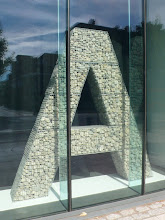
I am starting to develop work for a series of projects that view place through the lives of objects. A series of three projects will take a micro to macro, or private to public, look at Hackney in relation to objets that are kept, recycled, bought, or sold. The first in the series is the 'close up' view of objects in the home - how we create our own intimate space through the accumulation of significant objects.

This project was inspired by probe pack returns that talked about personal possessions that related to memories, to the process of one's life unfolding over time. These objects can be used to create a kind of 'pause' within one's ongoing life. A chipped blue mug from Berlin is more than that—it is a memory of a time and place, of a shared experience—it enables one to seemingly suspend the daily grind and transport oneself back to a particular moment.

One can perhaps see parallels with the ongoing gentrification and 'regeneration' of parts of Hackney—residents can control the space of their own homes and keep things that nay no longer be functional in a practical sense, but that function in an emotional way. They have less power when it comes to the demolition of the Four Aces Club or the cottages of Roseberry Place.

The content for the project will consist of two, possibly three, aspects—an essay written about 'stuff' (some of which appears in the post dated 9 August 2009), more personal texts and images provided by participants relating to the 'stuff' they referred to in their original answers and possibly a conversation about 'stuff' between myself and one of the participants.

This mix of threads will give me an opportunity to explore the idea of 'montage writing' (Crang & Cook, 2007)—an experimental form of ethnographic writing—within the context of design. The use of extended texts also provides a more realistic test for the geo/graphic design process in terms of the view of geographers and ethnographers who routinely deal with such extended texts and in relation to Mermoz's (1995 on) thoughts with regard to typography. It also offers another opportunity to refute Ingold's (2007) claims about the 'silencing' of the page since the advent of mechanical print.

All well and good, as so often is the way with neatly constructed argument through theory. But, the proof of the pudding, and this PhD is to be found within the practice and I am finding it not nearly so easy to construct such a watertight argument.

The first section I have explored visually is that of the essay The images previous and the next one below) and I am reasonably happy with the interpretation of the text in relation to Mermoz—that the typography should work at the 'level of the text'— and with the way it challenges Ingold's ideas that the page has no voice and is no longer a landscape one can travel.

The layout is constructed using the golden section and uses a 6 pica modular grid to reference the order—or when the text breaks out the grid, the disorder—relating to collections and collectors. The typeface used is Lucas de Groot's Thesis, which comes in a serif, sans and mix version—used to denote the difference between specific collections and generic 'stuff.'
However it is the interpretation of the participants' story (the following images) that I am less happy with. Or at least I am now I have stepped back a little from the screen.

I had a conversation with the work, and as Schön speculated, it talked back to me. Unfortunately it told me I was working in such a way as to be making self referential typographic interventions within the design that related not to the content of the text, but to the system of reading and the 'landscape' of the page.

I may have been trying to take interesting elements from medieval manuscripts, from a time—pre-Gutenberg—when pages were a maze that one had to make their way through, following asides and notations from individual scribes. I may have been accidentally enjoying making work that looks like it fell from the pages of Emigre circa 1992.

But I'm not sure what I was doing was making work that reflected the human story, the real content—work that engaged at the 'level of the text.' It is inhuman typography—it has become perhaps too much about the system and not enough about the person.

So further conversations with the work need to be had, to ensure that the voice of the participant appears within the pages, not just the voice of the designer...


No comments:
Post a Comment